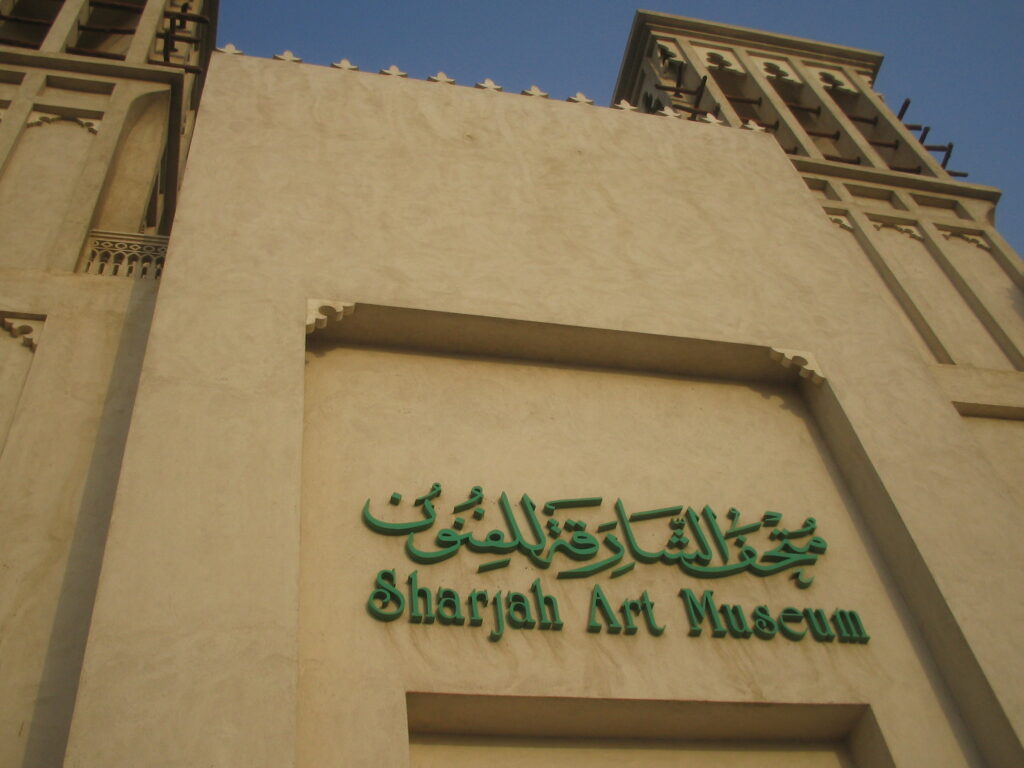
The Sharjah Art Museum stands as a testament to the United Arab Emirates’ deep-rooted commitment to the arts and culture. Located in the cultural capital of Sharjah, this museum is one of the largest and most significant art museums in the region. It offers visitors an unparalleled journey through the rich and diverse world of art, showcasing a blend of traditional and contemporary works from across the Arab world and beyond. In this blog, we will delve into the history, collections, exhibitions, and visitor experience at the Sharjah Art Museum, highlighting why it is a must-visit destination for art enthusiasts and cultural explorers alike.
History and Establishment of Sharjah Art Museum
The Sharjah Art Museum was inaugurated in April 1997 as part of the Sharjah Art Foundation, an initiative led by the Ruler of Sharjah, His Highness Sheikh Dr. Sultan bin Muhammad Al Qasimi. The foundation aims to foster a deeper appreciation of art and culture within the UAE and the wider Arab world.
Key Historical Milestones:
- Foundation: The museum was established as part of Sharjah’s broader efforts to promote art and culture, positioning the emirate as a leading cultural hub in the region. It was also aligned with the vision of Sharjah’s ruler to make the emirate a center for arts and education.
- Growth and Expansion: Since its opening, the Sharjah Art Museum has grown significantly, expanding its collections and programming. It now houses an extensive collection of artworks, ranging from 18th-century paintings to contemporary art.
- Cultural Impact: The museum has played a pivotal role in Sharjah’s cultural landscape, hosting numerous exhibitions, workshops, and art events that have attracted local, regional, and international audiences.
The Museum’s Architecture and Design
The Sharjah Art Museum is housed in a purpose-built structure that reflects the emirate’s architectural heritage while incorporating modern design elements. The museum’s design aims to create an inviting and inspiring space that enhances the visitor’s experience of the art on display.
Architectural Highlights:
- Traditional Influences: The museum’s architecture is inspired by traditional Arab designs, featuring elements such as arches, courtyards, and decorative motifs. These design choices create a seamless blend between the museum’s contemporary purpose and its cultural context.
- Spacious Galleries: The museum boasts large, airy galleries that provide ample space for displaying artworks. The galleries are designed to allow for natural light, which enhances the viewing experience while also protecting the artworks from direct sunlight.
- Outdoor Spaces: In addition to its indoor galleries, the Sharjah Art Museum features outdoor spaces that are used for installations, performances, and events. These spaces add an additional dimension to the museum experience, allowing visitors to engage with art in a variety of settings.
Collections and Exhibitions
The Sharjah Art Museum is renowned for its diverse and extensive collections, which include works from both Arab and international artists. The museum’s permanent collection is complemented by a dynamic program of temporary exhibitions, ensuring that there is always something new to discover.
Key Collections:
- Arab Art: The museum is home to one of the largest collections of Arab art in the world, featuring works from pioneering artists across the Middle East and North Africa. These pieces span a range of styles and periods, offering insights into the rich artistic heritage of the Arab world.
- Orientalist Paintings: The Sharjah Art Museum houses an impressive collection of Orientalist paintings, created by European artists in the 18th and 19th centuries. These works, which depict scenes from the Arab world, provide a fascinating glimpse into how the region was perceived by Western artists of the time.
- Contemporary Art: The museum also places a strong emphasis on contemporary art, showcasing works by both emerging and established artists. These pieces reflect current trends and issues in the art world, as well as the evolving cultural landscape of the region.
- Islamic Art: The museum’s collection includes a variety of Islamic art, featuring calligraphy, ceramics, textiles, and more. These works highlight the rich artistic traditions of the Islamic world and their influence on contemporary art.
Notable Exhibitions:
- Sharjah Biennial: The Sharjah Art Museum is a key venue for the Sharjah Biennial, one of the most important contemporary art events in the Middle East. The biennial features works by artists from around the world, exploring themes of identity, politics, and culture.
- Special Exhibitions: The museum regularly hosts special exhibitions that focus on specific artists, movements, or themes. These exhibitions often include works on loan from other museums and private collections, providing visitors with a unique opportunity to see rare and important pieces.
- Retrospectives: The Sharjah Art Museum has hosted several retrospectives of prominent Arab artists, offering an in-depth look at their careers and contributions to the art world. These retrospectives are an important part of the museum’s mission to preserve and celebrate Arab art.
Educational and Community Programs
The Sharjah Art Museum is committed to making art accessible to all, and it offers a wide range of educational programs and community initiatives designed to engage audiences of all ages.
Key Programs:
- Workshops and Classes: The museum offers a variety of art workshops and classes, covering topics such as painting, sculpture, photography, and more. These programs are designed for participants of all skill levels, from beginners to experienced artists.
- Guided Tours: Visitors to the museum can take advantage of guided tours, which provide insights into the artworks on display and the history of the museum. These tours are available in multiple languages and are tailored to different age groups and interests.
- Educational Programs for Schools: The Sharjah Art Museum works closely with local schools to provide educational programs that complement the curriculum. These programs include interactive tours, art-making activities, and lectures that help students develop an appreciation for art.
- Community Outreach: The museum is dedicated to engaging with the local community and offers a variety of outreach programs designed to make art accessible to all. These initiatives include partnerships with local organizations, special events, and programs for underserved populations.
Visitor Experience – What to Expect
A visit to the Sharjah Art Museum offers a rich and immersive experience, whether you’re a seasoned art lover or a curious first-timer. The museum’s welcoming atmosphere, diverse collections, and engaging programs make it a must-visit destination in the UAE.
Visitor Tips:
- Plan Your Visit: The museum is open six days a week, with extended hours on weekends. Be sure to check the museum’s website for the latest information on opening times, exhibitions, and events.
- Take a Guided Tour: To get the most out of your visit, consider joining a guided tour. The knowledgeable guides will provide you with a deeper understanding of the artworks and the museum’s history.
- Explore the Gift Shop: The museum’s gift shop offers a selection of art books, prints, and unique souvenirs. It’s a great place to find a memento of your visit or a gift for an art-loving friend.
- Attend an Event: The Sharjah Art Museum hosts a variety of events throughout the year, including artist talks, film screenings, and performances. Check the museum’s calendar to see what’s happening during your visit.
Conclusion
The Sharjah Art Museum is more than just a place to view art; it is a cultural institution that plays a vital role in the UAE’s artistic and cultural landscape. Whether you’re interested in exploring the rich heritage of Arab art, discovering new contemporary artists, or participating in educational programs, the Sharjah Art Museum offers something for everyone. Its diverse collections, engaging exhibitions, and commitment to community make it a must-visit destination for anyone interested in the arts.
